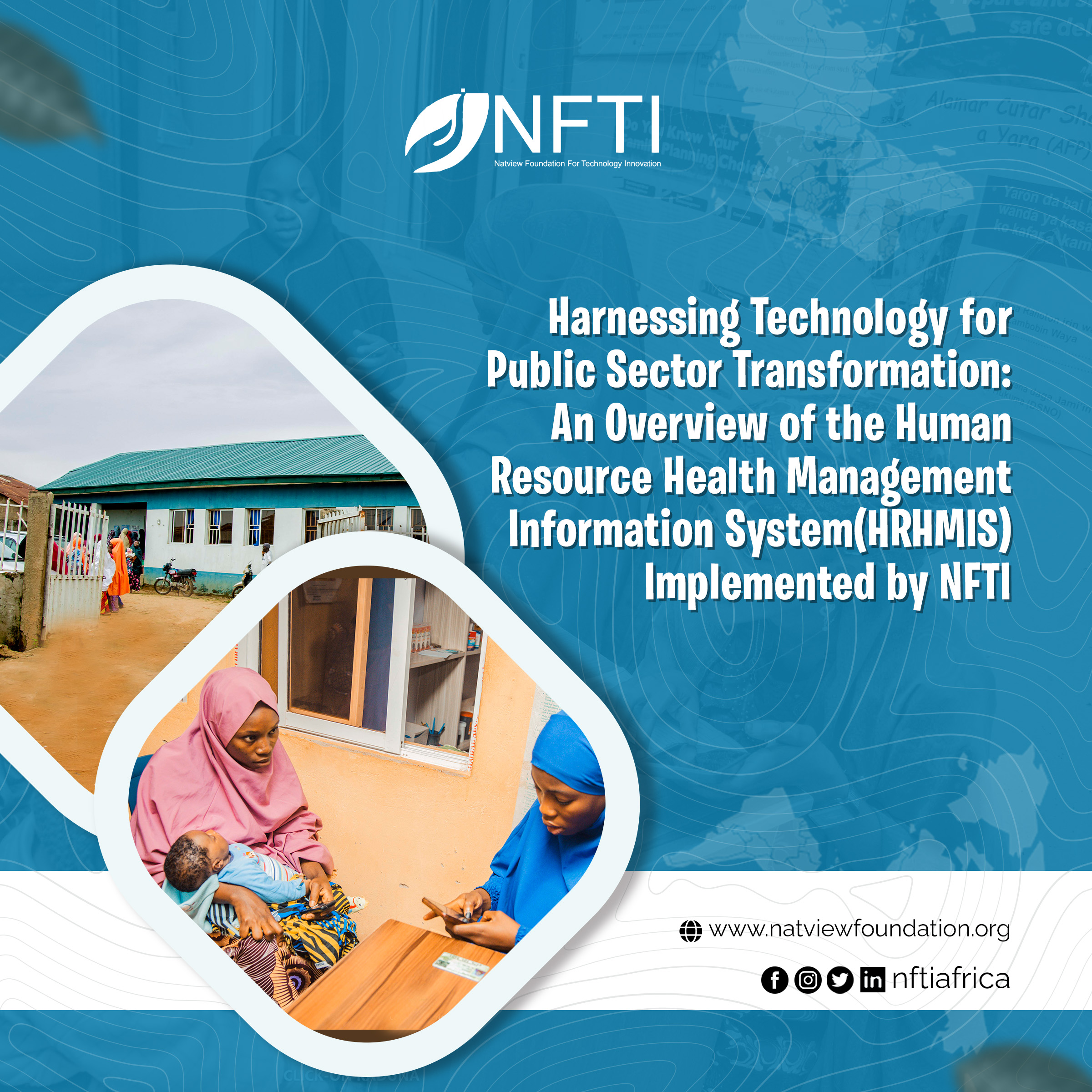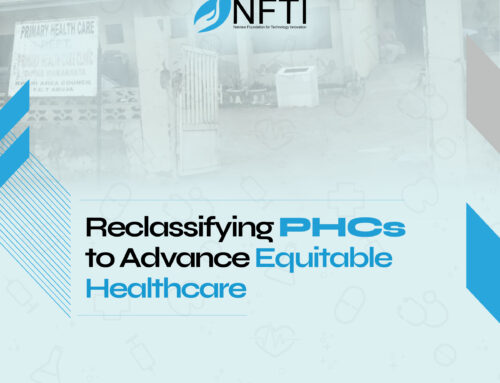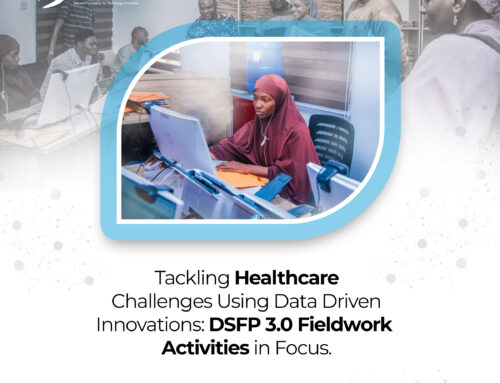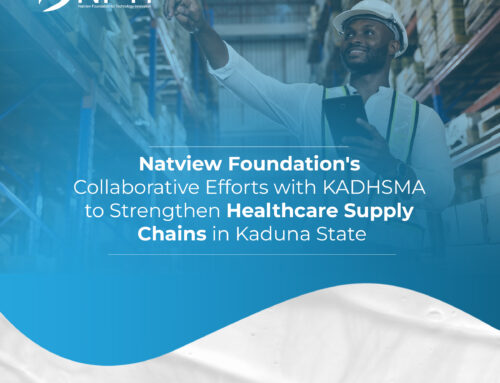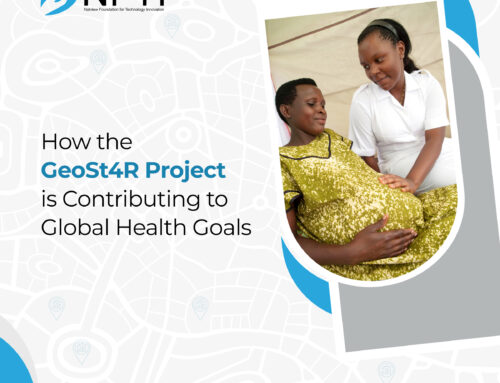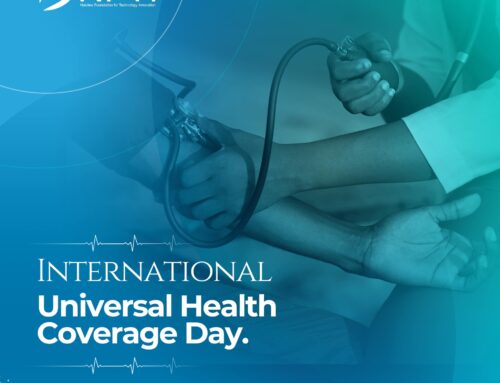Harnessing Technology for Public Sector Transformation: An Overview of the Human Resource Health Management Information System (HRHMIS) Implemented by the Natview Foundation for Technology Innovation
The pressing need for efficient and effective management of Human Resource for Health (HRH) data is felt now more than ever, especially in light of the acute shortage of healthcare professionals, most markedly in rural and remote areas. This shortfall has placed a significant burden on healthcare service delivery, underscoring the necessity for optimized HRH management. Enhancements in the management and distribution of Human Resource for Health hold the promise of significantly reshaping and augmenting the delivery of healthcare services.
As part of a broader initiative to strengthen the Primary Health Care (PHC) System, the Kaduna State Primary Healthcare Board (SPHCB) is digitalizing its standard operating procedures and leveraging technology for its Human Resource Management. This endeavor is more than a simple digital upgrade; it’s a cornerstone in building a robust PHC system. By implementing an effective, digitized HRHMIS, the SPHCB is laying the groundwork for planning effective distribution and workforce projections across the PHC facilities in Kaduna state.
The Natview Foundation for Technology Innovation (NFTI) is at the forefront of implementing the HRHMIS for the SPHCB. Supported by a consortium of donor organizations, NFTI and SPHCB aspire to not only digitize and streamline existing processes but also utilize technology as a driving force for social development and enhanced decision-making for the state government, policymakers, and other major stakeholders in the health sector. Through these concerted efforts, the Foundation is making notable strides in revolutionizing policy tracking, monitoring, and evaluation in Nigeria.
The system is aimed at creating an integrated human resourcing record system and business process mapping of various HRH business rules. This initiative will provide real-time summaries of human resource distribution across the board and various reporting metrics, thereby driving insights into Human Resource for Health Management.
Managing Human Resource for Health at the Primary Health Care (PHC) level currently faces several hurdles. Manual, paper-based processes are laborious and inefficient, with a lack of real-time data access slowing decision-making and impeding the prompt resolution of HR issues. The absence of a centralized HRHMIS compounds the problem by hindering the quick and accurate evaluation of current and future healthcare workforce needs, making it tough to distribute the workforce efficiently. Furthermore, limited data analysis and reporting capabilities make it difficult to monitor key HRH metrics, such as workforce productivity, attrition rates, and skill gaps. The solution lies in a robust, digitized HRHMIS, which can enhance data analysis, facilitate real-time decision-making, and ultimately improve resource distribution and service delivery.
NFTI is optimizing the current process workflows in several key ways. We are targeting bottlenecks and simplifying existing processes into more straightforward business rules to improve efficiency. The HRHMIS will focus on workforce optimization, strategically planning to boost the efficiency, productivity, and performance of healthcare workers through real-time data rather than relying on quarterly updates. Further, by facilitating precise data analysis and reporting, the HRHMIS will enable data-driven decision-making from a single, centralized source of HRH data. Additionally, HRHMIS will improve service quality by streamlining, not just digitizing, existing processes for a more efficient, effective workflow, leading to enhanced service delivery.
Dimensioning the HRH landscape requires a deep understanding of the purposes of different datasets. The key lies in building models that answer strategic questions across the HR continuum.
Underlying the HRH transformation are several strategic priorities. They range from understanding the Gender Distribution, Qualifications, Location, and Cadre Grade levels of Healthcare workers (HCW) to HRH profiling disaggregated to the last mile at the Facility level.
Other priorities include tracking employee transfers, retirements, and attrition of HCW, mapping to population data, health workforce planning, retirement forecasting, and Minimum Service Package from a facility and population lens. The Minimum Service Package (MSP) is one of the nine components of the Primary Health Care Under One Roof policy (PHCUOR), which is aimed at providing a strategic focus for investment in the key areas of Human Resources for health (HRH), infrastructure, and equipment in PHCs. In essence, Talent Management also holds a prominent place in these priorities, with focus areas like tracking In-Service Training and Health Workforce Productivity.
The power of HRHMIS is in its capacity to chart the complex distribution and location of Healthcare Workers (HCWs) across various locations in Kaduna state. By providing detailed insights into their dispersion, the system empowers healthcare policymakers to identify and address discrepancies in healthcare delivery and devise effective workforce redistribution strategies.
The system is aimed at creating an integrated human resourcing record system and business process mapping of various HRH business rules. This initiative will provide real-time summaries of human resource distribution across the board and various reporting metrics, thereby driving insights into Human Resource for Health Management.
A key challenge in healthcare delivery is the rural-urban divide. HRHMIS is being engineered to tackle this issue head-on. By providing accurate data on HCWs serving in rural versus urban areas, the system aims to help policymakers address staff shortages or overages effectively in different regions, thereby bridging the rural-urban healthcare gap.
Emphasizing high standards of care, HRHMIS is being designed to track the qualifications of HCWs and compare them with the requirements of their respective roles. The objective is to ensure that every healthcare worker meets the necessary professional standards for their specific cadre or grade level.
In evaluating the impact of in-service training on healthcare delivery, HRHMIS is set to track the number of HCWs currently enrolled in training programmes. By offering insights into their resumption timelines, the system will enable quantifiable measurement of the impact on service delivery during their training period, ensuring the continuity of quality healthcare services.
Moreover, HRHMIS will aim to provide a comparative analysis of service data from the District Health Information System (DHIS) and the Minimum Service Package (MSP) to ensure the healthcare workforce is sufficient to meet demand. This key feature is expected to greatly aid in healthcare planning and management.
In assessing the quality of service delivery, HRHMIS is being designed to evaluate whether staff training levels align with service performance. This innovative tool will identify potential training gaps, enabling the implementation of measures to improve service quality.
As an instrument for achieving equitable healthcare services, HRHMIS will be equipped to analyze staff distribution in relation to service delivery across rural and urban areas. This function will be vital in decision-making processes aimed at achieving equitable healthcare service distribution.
In workforce management, retirement planning plays a crucial role. As part of its comprehensive package, HRHMIS is being designed to forecast the number of staff due to retire within specific time frames and their distribution, thereby aiding proactive hiring and training processes to ensure the continuity of healthcare services.
As HRHMIS continues to develop, it stands as a testament to the transformative potential of technology in the health sector. By addressing these critical strategic questions, HRHMIS promises to contribute significantly to the positive transformation of the healthcare landscape in Kaduna State and beyond.
This article was written by Olubunmi David, with insightful contributions from Cynthia Caxton (Business Development & Requirements SME, HRHMIS) and Fatima Tafoki (Senior Programmes Officer, NFTI).
Harnessing Technology for Public Sector Transformation: An Overview of the Human Resource Health Management Information System (HRHMIS) Implemented by the Natview Foundation for Technology Innovation
The pressing need for efficient and effective management of Human Resource for Health (HRH) data is felt now more than ever, especially in light of the acute shortage of healthcare professionals, most markedly in rural and remote areas. This shortfall has placed a significant burden on healthcare service delivery, underscoring the necessity for optimized HRH management. Enhancements in the management and distribution of Human Resource for Health hold the promise of significantly reshaping and augmenting the delivery of healthcare services.
As part of a broader initiative to strengthen the Primary Health Care (PHC) System, the Kaduna State Primary Healthcare Board (SPHCB) is digitalizing its standard operating procedures and leveraging technology for its Human Resource Management. This endeavor is more than a simple digital upgrade; it’s a cornerstone in building a robust PHC system. By implementing an effective, digitized HRHMIS, the SPHCB is laying the groundwork for planning effective distribution and workforce projections across the PHC facilities in Kaduna state.
The Natview Foundation for Technology Innovation (NFTI) is at the forefront of implementing the HRHMIS for the SPHCB. Supported by a consortium of donor organizations, NFTI and SPHCB aspire to not only digitize and streamline existing processes but also utilize technology as a driving force for social development and enhanced decision-making for the state government, policymakers, and other major stakeholders in the health sector. Through these concerted efforts, the Foundation is making notable strides in revolutionizing policy tracking, monitoring, and evaluation in Nigeria.
The system is aimed at creating an integrated human resourcing record system and business process mapping of various HRH business rules. This initiative will provide real-time summaries of human resource distribution across the board and various reporting metrics, thereby driving insights into Human Resource for Health Management.
Managing Human Resource for Health at the Primary Health Care (PHC) level currently faces several hurdles. Manual, paper-based processes are laborious and inefficient, with a lack of real-time data access slowing decision-making and impeding the prompt resolution of HR issues. The absence of a centralized HRHMIS compounds the problem by hindering the quick and accurate evaluation of current and future healthcare workforce needs, making it tough to distribute the workforce efficiently. Furthermore, limited data analysis and reporting capabilities make it difficult to monitor key HRH metrics, such as workforce productivity, attrition rates, and skill gaps. The solution lies in a robust, digitized HRHMIS, which can enhance data analysis, facilitate real-time decision-making, and ultimately improve resource distribution and service delivery.
NFTI is optimizing the current process workflows in several key ways. We are targeting bottlenecks and simplifying existing processes into more straightforward business rules to improve efficiency. The HRHMIS will focus on workforce optimization, strategically planning to boost the efficiency, productivity, and performance of healthcare workers through real-time data rather than relying on quarterly updates. Further, by facilitating precise data analysis and reporting, the HRHMIS will enable data-driven decision-making from a single, centralized source of HRH data. Additionally, HRHMIS will improve service quality by streamlining, not just digitizing, existing processes for a more efficient, effective workflow, leading to enhanced service delivery.
Dimensioning the HRH landscape requires a deep understanding of the purposes of different datasets. The key lies in building models that answer strategic questions across the HR continuum.
Underlying the HRH transformation are several strategic priorities. They range from understanding the Gender Distribution, Qualifications, Location, and Cadre Grade levels of Healthcare workers (HCW) to HRH profiling disaggregated to the last mile at the Facility level.
Other priorities include tracking employee transfers, retirements, and attrition of HCW, mapping to population data, health workforce planning, retirement forecasting, and Minimum Service Package from a facility and population lens. The Minimum Service Package (MSP) is one of the nine components of the Primary Health Care Under One Roof policy (PHCUOR), which is aimed at providing a strategic focus for investment in the key areas of Human Resources for health (HRH), infrastructure, and equipment in PHCs. In essence, Talent Management also holds a prominent place in these priorities, with focus areas like tracking In-Service Training and Health Workforce Productivity.
The power of HRHMIS is in its capacity to chart the complex distribution and location of Healthcare Workers (HCWs) across various locations in Kaduna state. By providing detailed insights into their dispersion, the system empowers healthcare policymakers to identify and address discrepancies in healthcare delivery and devise effective workforce redistribution strategies.
The system is aimed at creating an integrated human resourcing record system and business process mapping of various HRH business rules. This initiative will provide real-time summaries of human resource distribution across the board and various reporting metrics, thereby driving insights into Human Resource for Health Management.
A key challenge in healthcare delivery is the rural-urban divide. HRHMIS is being engineered to tackle this issue head-on. By providing accurate data on HCWs serving in rural versus urban areas, the system aims to help policymakers address staff shortages or overages effectively in different regions, thereby bridging the rural-urban healthcare gap.
Emphasizing high standards of care, HRHMIS is being designed to track the qualifications of HCWs and compare them with the requirements of their respective roles. The objective is to ensure that every healthcare worker meets the necessary professional standards for their specific cadre or grade level.
In evaluating the impact of in-service training on healthcare delivery, HRHMIS is set to track the number of HCWs currently enrolled in training programmes. By offering insights into their resumption timelines, the system will enable quantifiable measurement of the impact on service delivery during their training period, ensuring the continuity of quality healthcare services.
Moreover, HRHMIS will aim to provide a comparative analysis of service data from the District Health Information System (DHIS) and the Minimum Service Package (MSP) to ensure the healthcare workforce is sufficient to meet demand. This key feature is expected to greatly aid in healthcare planning and management.
In assessing the quality of service delivery, HRHMIS is being designed to evaluate whether staff training levels align with service performance. This innovative tool will identify potential training gaps, enabling the implementation of measures to improve service quality.
As an instrument for achieving equitable healthcare services, HRHMIS will be equipped to analyze staff distribution in relation to service delivery across rural and urban areas. This function will be vital in decision-making processes aimed at achieving equitable healthcare service distribution.
In workforce management, retirement planning plays a crucial role. As part of its comprehensive package, HRHMIS is being designed to forecast the number of staff due to retire within specific time frames and their distribution, thereby aiding proactive hiring and training processes to ensure the continuity of healthcare services.
As HRHMIS continues to develop, it stands as a testament to the transformative potential of technology in the health sector. By addressing these critical strategic questions, HRHMIS promises to contribute significantly to the positive transformation of the healthcare landscape in Kaduna State and beyond.
This article was written by Olubunmi David, with insightful contributions from Cynthia Caxton (Business Development & Requirements SME, HRHMIS) and Fatima Tafoki (Senior Programmes Officer, NFTI).

